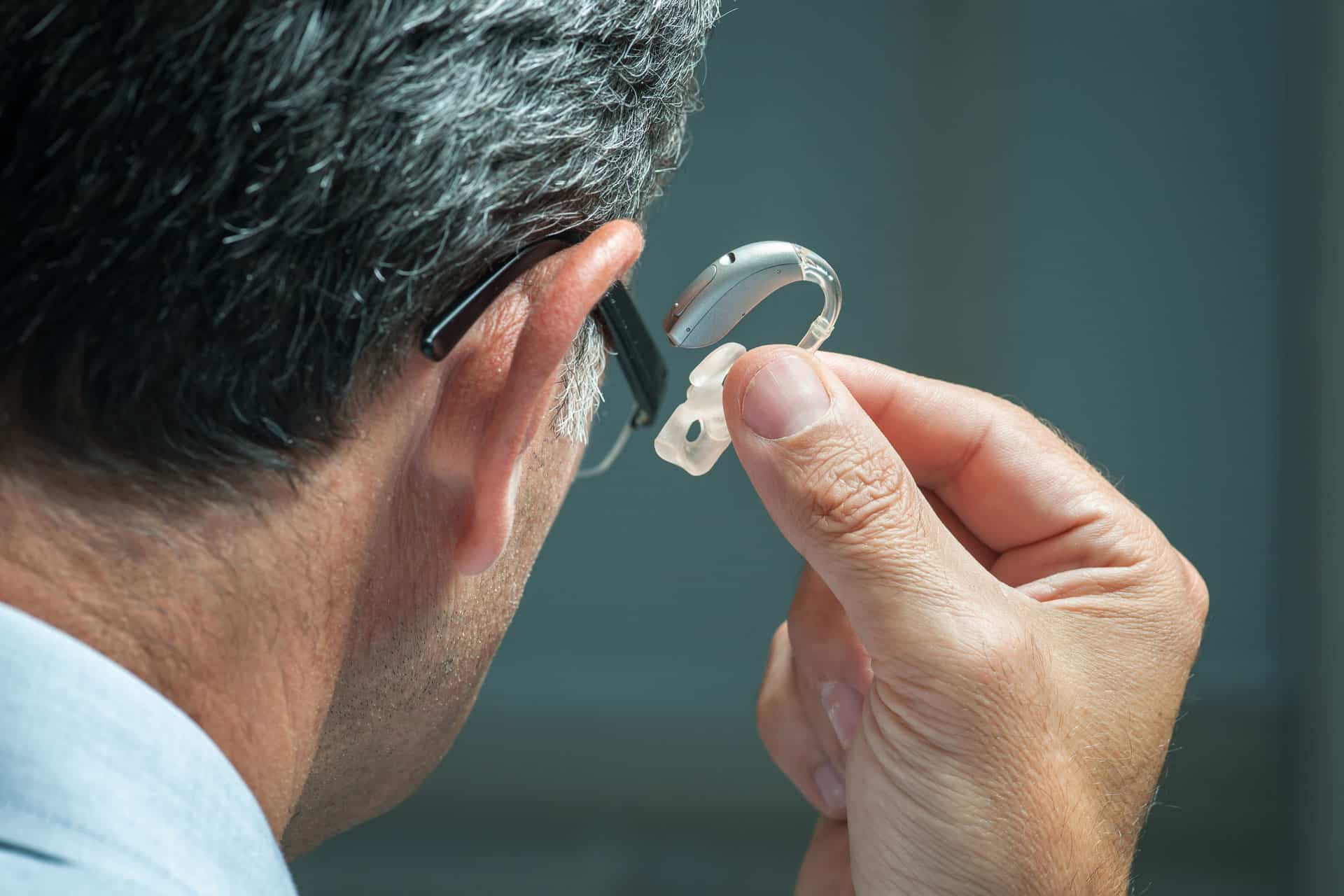Delivery in 2-3 working days
Ear diseases
Our ear is a sensitive organ. It consists of three main parts: the outer ear, the middle ear and the inner ear - and each has a specific structure and function that are crucial for hearing. That's why it's so important to keep our ears healthy.
In this article we want to give you an overview of various ear diseases, introduce you to the symptoms and causes and give you tips for prevention and treatment.
Ear diseases at a glance
Like any other organ in or on the human body, the ear can become diseased or injured in a variety of ways. These diseases and the associated symptoms can be temporary, but can also become chronic. In the worst case, they can permanently damage the ears and lead to hearing problems or even hearing loss.
Below you will find a few of the most common ear diseases.
Common ear diseases
Inflammation of the middle ear (otitis media)
Otitis media is probably one of the best-known ear diseases . Doctors also refer to it as "otitis media". It occurs when fluid accumulates in the middle ear and triggers an infection. The middle ear, the space behind the eardrum, contains the auditory ossicles, which play a key role in hearing. Acute middle ear infection is one of the most common illnesses in children and infants, but can affect people of all ages. Typical symptoms are earache and a feeling of pressure in the ear. In severe cases, it can lead to hearing loss.
Antibiotic ear drops or oral antibiotics are often used to treat a middle ear infection in order to fight the infection and alleviate the symptoms.
Inflammation of the ear canal (otitis externa)
Ear canal inflammation is one of the most common causes of earachewhich is often very severe. It can be caused by infections or irritation of the ear canal, for example due to incorrect or too frequent cleaning with cotton buds, as well as water in the ear (for example when swimming or bathing). Allergic reactions, for example to hair care products, can also cause inflammation of the ear canal. Ear canal inflammation is usually treated with ear drops and ointments. In some cases, antibiotics are prescribed by the doctor.
Tympanic effusion
In the case of a tympanic effusion, a tubal dysfunction, i.e. a ventilation disorder in the ear, leads to an accumulation of non-purulent fluid behind the eardrum. Typical symptoms include increasing hearing loss and a feeling of pressure in the ear. Tympanic effusions mainly occur in childhood. They can improve on their own, usually within a few days or weeks. In some cases, however, treatment is advisable, ranging from nasal decongestant drops to various medications. In rare cases, surgery may be necessary .
Tinnitus
With tinnitus is not actually an ear disease, but a symptom. Nevertheless, it is one of the most common complaints affecting the ear. Tinnitus refers to the perception of ear and head noises, such as buzzing, whistling or hissing. However, these noises are only perceived by those affected. They can occur periodically or be permanent and vary in intensity and volume.
In order to treat tinnitus, the cause must be found and treated accordingly. For example, hearing aids can help to drown out the ringing in the ears.
sudden deafness
Even with a sudden hearing loss is not an ear disease, but a common hearing disorder that is thought to be caused by illness, infection or other factors such as stress. Typical symptoms of sudden hearing loss include a dull sensation in the ear, ringing in the ears, balance problems and ear pain. A sudden hearing loss can occur regardless of age or gender, but often occurs around the age of 50. The treatment of sudden hearing loss is carried out after a precise diagnosis by the doctor. Cortisone-containing medication is often prescribed to combat the inflammation.
Hearing loss and deafness
Hearing loss refers to a reduction in hearing, i.e. a decrease in hearing ability, which can range from mild hearing problems to hearing loss and even deafness. Hearing loss can be temporary, for example due to various ear diseases, as well as chronic. types of hearing lossfor example conductive hearing loss and sensorineural hearing loss as well as combined hearing loss.
The treatment of hearing loss is always individual, depending on the diagnosis and causes. It can be carried out with the help of medication, technical hearing aids or special audio therapies.
Rare ear diseases
In addition to the common ear diseases listed above, there are a number of rare diseases that can affect the ear and hearing. We would like to introduce you to a few of them below.
Meniere's disease
Meniere's disease, also known as Ménière's disease, is a unilateral disease of the inner ear in which an increased accumulation of fluid (hydrops) leads to a temporary increase in pressure in the inner ear. This can cause various symptoms in those affected, including hearing problems, dizziness with nausea and vomiting and tinnitus. Research assumes that this ear disease is at least partly hereditary. It occurs slightly more frequently in women than in men , usually between the ages of 40 and 60.
The treatment of Meniere's disease is usually initially aimed at alleviating the symptoms, for example with medication for dizziness or vomiting. For long-term treatment, the drug betahistine or antibiotics are sometimes used. The doctor decides which therapy makes sense.
Cholesteatoma
Cholesteatoma, also known as bone suppuration, is another rare ear disease. It is a purulent inflammation of the middle ear, which can be caused by chronic middle ear inflammation, among other things. Another cause of cholesteatoma is damage to the eardrum, which leads to skin cells and bacteria entering the middle ear. Typical symptoms include frequent ear infections and earache, reduced hearing and a feeling of pressure on the ear. Those affected also often complain of discharge from the ear canal.
As a rule, a cholesteatoma must be surgically removed to prevent further ear diseases. This can be accompanied by anti-inflammatory medication or antibiotics administered by the doctor.
Otosclerosis
Otosclerosis is an ear disease that causes changes to the bone structures in the inner and middle ear. Bone hardening, growth and new bone formations lead to the transmission of sounds from the middle ear to the inner ear being impaired. This results in conductive hearing loss and, in the worst case, deafness.
Both ears are usually affected by otosclerosis. The disease occurs predominantly in women, usually between the ages of 20 and 50. In 25 to 50 percent of cases, this ear disease is hereditary. Other suspected causes include viral infections, autoimmune reactions of the body and hormonal influences, although the causes are not yet fully understood.
The only treatment method for otosclerosis is surgery. In a stapedotomy, the stapes, the smallest ossicle in the middle ear, is replaced with a prosthesis.
Diplakusis
Diplacusis is an ear disease that is also known as "double hearing". The name gives it away: those affected hear the sound in both ears at different volumes or pitches and therefore two sounds instead of one, sometimes not at the same time but offset. It is therefore a hearing disorder. The causes of diplacusis are not yet fully understood. The causes may include noise damage, an untreated middle ear infection or blockages in the inner ear, for example due to infections or earwax . As with some other ear diseases, the treatment of diplacusis is based on an accurate diagnosis. You should therefore always consult a doctor if hearing loss begins.
Treatment of ear diseases
The overview of the various ear diseases shows that they should always be treated individually and according to the doctor's diagnosis.
He or she will ultimately decide whether medication, surgery, hearing aids, implants or other treatment options are appropriate.
When should you see a doctor for ear diseases?
Temporary hearing problems or earaches are not always a serious ear disease. However, you should always see a doctor immediately if you experience pain. An ENT specialist should also be consulted if you notice hearing loss. Medical advice is also essential if you notice accompanying symptoms such as dizziness, ringing in the ears (tinnitus), discharge from the ear or fever.
For children and infants, it is generally advisable to see a doctor immediately if you experience ear pain or symptoms of an ear infection in order to avoid further pain or complications.
Tips for preventing ear diseases
Many, if not all, ear diseases are the result of infections caused by bacteria, viruses or fungi. Such infections can be favored by various factors, for example a weakened immune system, water in the ear, poor or incorrect ear hygiene. Noise can also be a reason why ear damage occurs.
For this reason, you should try to avoid precisely these factors. The following tips can help you:
Correct ear hygiene
Proper care and cleaning of the ears is important to keep bacteria and dirt away. At the same time, however, earwax also serves as natural protection, which is why too much cleaning can be harmful. Ear cleaning should always be gentle so that the ear canals are not damaged. The use of cotton buds should be avoided.
Avoiding noise
Loud music, road traffic, building sites: Constant exposure to noise can permanently damage the hair cells in the inner ear. This damage causes progressive hearing loss. So try to avoid sources of noise or wear hearing protection. hearing protection.
Protect your ears from water
A swimming cap or special earplugs can help prevent water from entering the ear, for example when bathing or swimming.
Regular ear examinations
In order to detect possible hearing problems or ear diseases at an early stage, you should visit your doctor regularly for a check-up. As soon as you notice ear pain or a deterioration in your hearing ability, you should also go to the doctor.
Healthy living
A healthy lifestyle with sufficient exercise can help to promote general health and therefore also ear health. A balanced diet strengthens the immune system and helps to prevent infections that can affect the ear.



